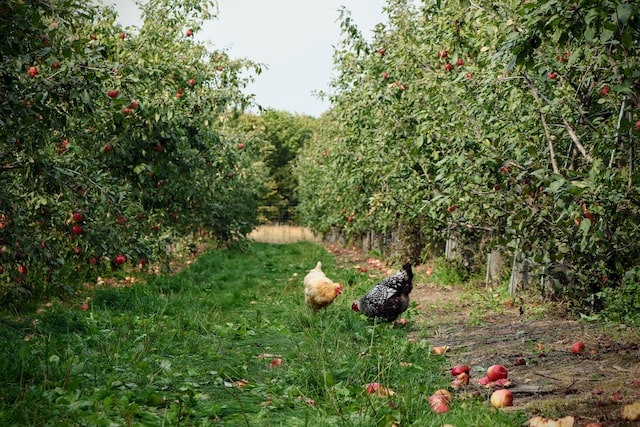
The smart way of using land is ancient: in the past, people depended on the fertility of the soil, so agroforestry was widespread. Then we developed pesticides and fertilisers and gradually mechanised agriculture. Monocultures were supposed to increase efficiency. Slowly, however, the advantages of using the land in a diverse way are being appreciated again. Adapted to the modern form of agriculture, we can even use agroforestry on a large scale.
Monocultures refer to areas where one and the same plant species is cultivated over a long period of time. This simplifies the farmers’ work and saves money, as they can concentrate on one species. At the same time, monocultures are harmful to the environment. The plants always draw the same nutrients from the soil, which damages the quality of the soil. Monocultures are also more susceptible to pests and weeds. Therefore, more pesticides have to be used, which in turn harm nature.
Agroforestry: An aggressive forest?
The meaning of agroforestry (in short: agroforestry) is already in the term: it is a mixture of agronomy (agriculture) and forestry (the management of forests). It is noticeable that agroforestry does not mean the cultivation of a single plant species, but combines different plants on the same area. In this way, the plants can benefit from each other.
This is exactly what is meant when agroforestry is described as a “multifunctional type of land use”. The simultaneous cultivation of trees and / or shrubs with crops and / or livestock leads to interactions that can be used consciously. Indeed, the plants (and animals) can take advantage of each other’s presence. As a result, the areas offer greater yields: 100 hectares of agroforestry give the same harvest as 140 hectares of monoculture. Thus, an agroforest is a small, man-made ecosystem.
This diagram shows you the proposal of a controllable definition of agroforestry, a model template for planning agroforestry areas, so to speak. Such a definition is important because it creates a standardisation, taking into account the huge diversity of agroforestry. Accordingly, land areas can be controlled and recognised under funding law.

Diversity #1: Agroforestry species
Several features make agroforestry diverse. The first reason is the multifaceted ways in which we can practise agroforestry.
So-called silvoarable systems combine trees with crops. Often the trees are arranged in strips so that the fields in between are easily accessible for cultivation. In this way, combine harvesters, for example, can still fit on the farmland. The trees are a helpful addition to the arable crops, as they provide important wind protection, among other things.
Silvopastoral systems link trees to animal husbandry. A common example of this is orchards with animals, like the one in the photo. The chickens can benefit from the shade of the trees here, for example.

The third type of agroforestry are agrosilvopastoral systems that combine trees, arable crops and animal husbandry. Here, among other things, it is helpful that the animals fertilise the soil directly.
Apart from the many possible combinations, agroforests also differ by region. For example, aquacultures for fish farming can be agroforested in mangrove forests.
Other subspecies are also differentiated by their characteristics. For example, there are numerous possibilities for arranging woody plants or including water bodies.
Diversity #2: Agroforestry product range
Of course, the cultivation of diverse (plant) species also offers diverse products. Let us therefore turn to the most common products from agroforestry.
Wood can be obtained through the widespread cultivation of trees and shrubs. If used sustainably, the trees can continue to grow after harvesting, so that they can be harvested several times. The wood can then be used as wood chips, energy wood, construction wood, carving wood, etc. use.
If they are fruit trees, the harvested fruits can become juices, jams, fruit brandies or dried fruit. In addition, the trees provide a food source for birds, insects and wild mammals. By the way, orchards are the most original form of agroforestry!
If animals live on the land, in Germany they are mostly chickens, geese, ducks, goats, pigs, cattle and bees. Their products then stand for species-appropriate husbandry.
Cereals and other plants grown in agroforests can be used, for example, for baked goods or edible oils. Another possibility is to cultivate fibre plants from which textiles can be produced.
Diversity #3: Advantages of agroforestry

Challenges of agroforestry
